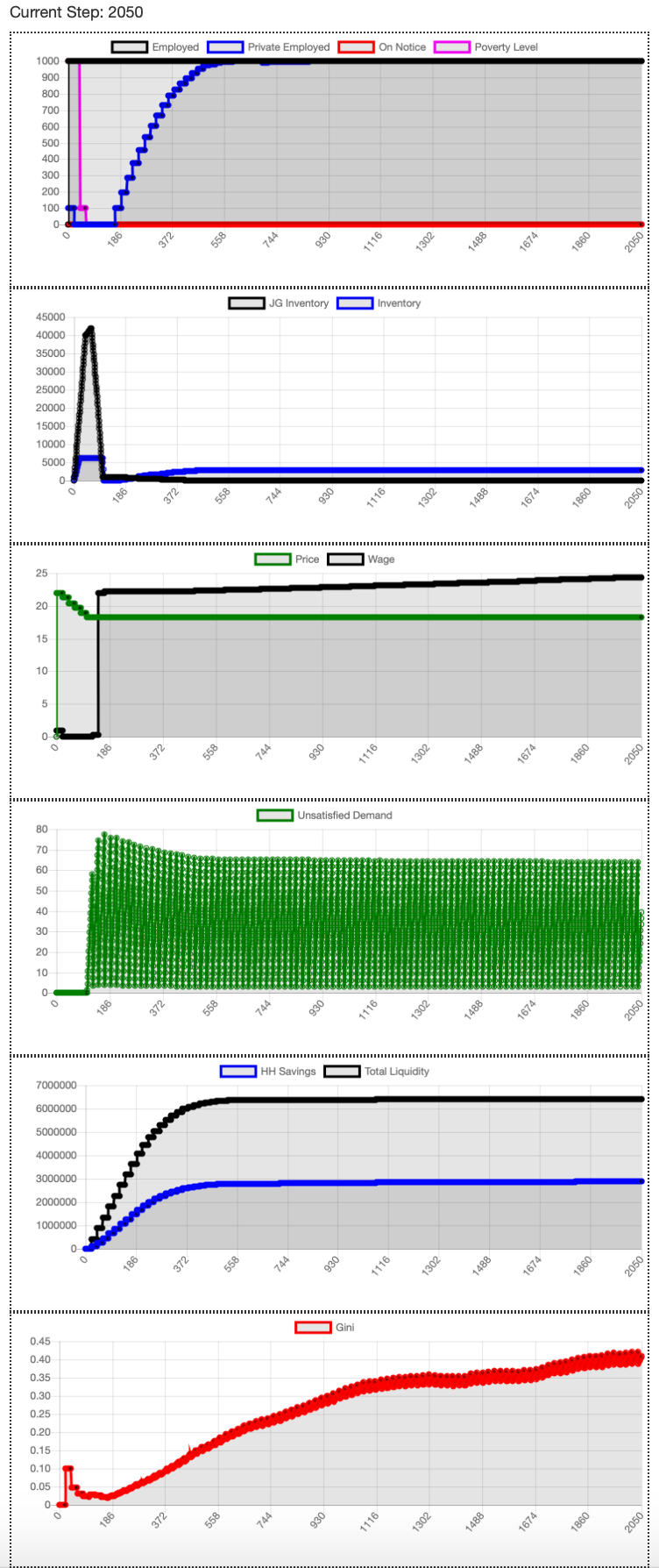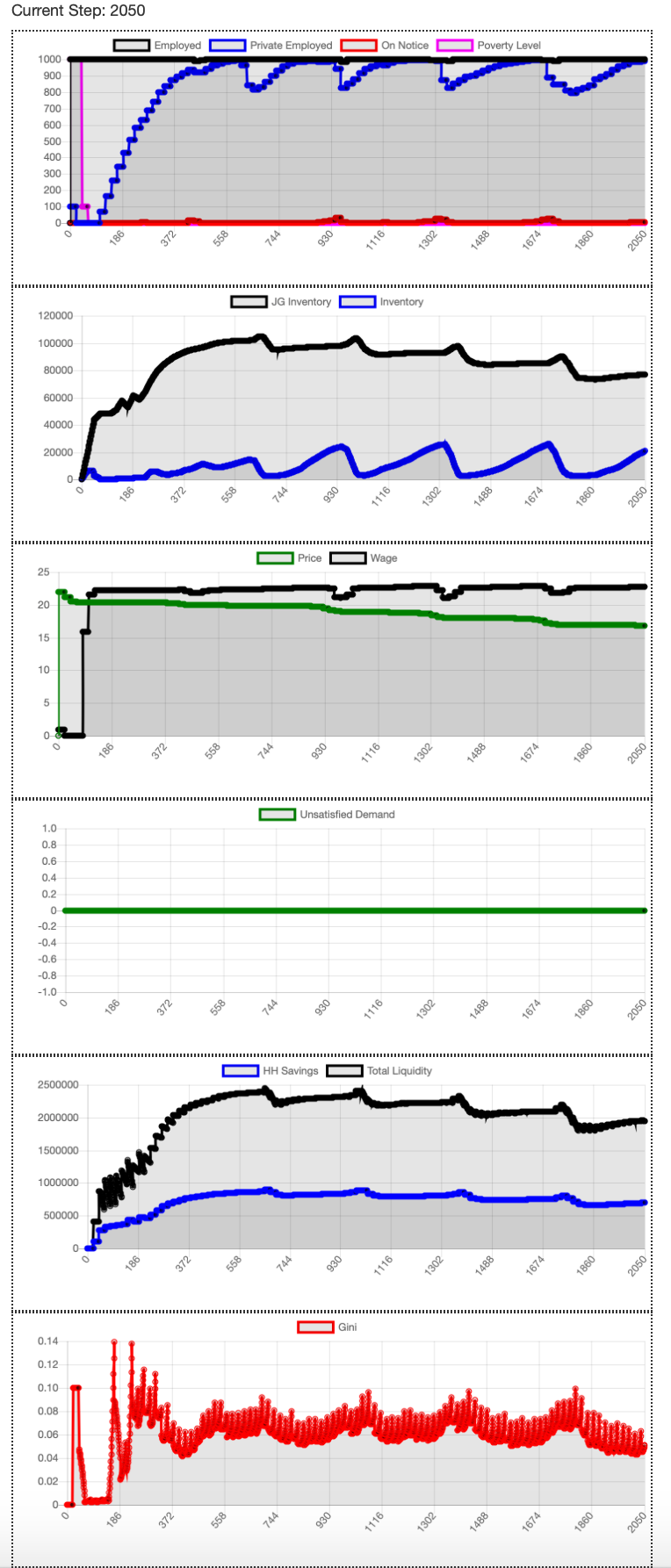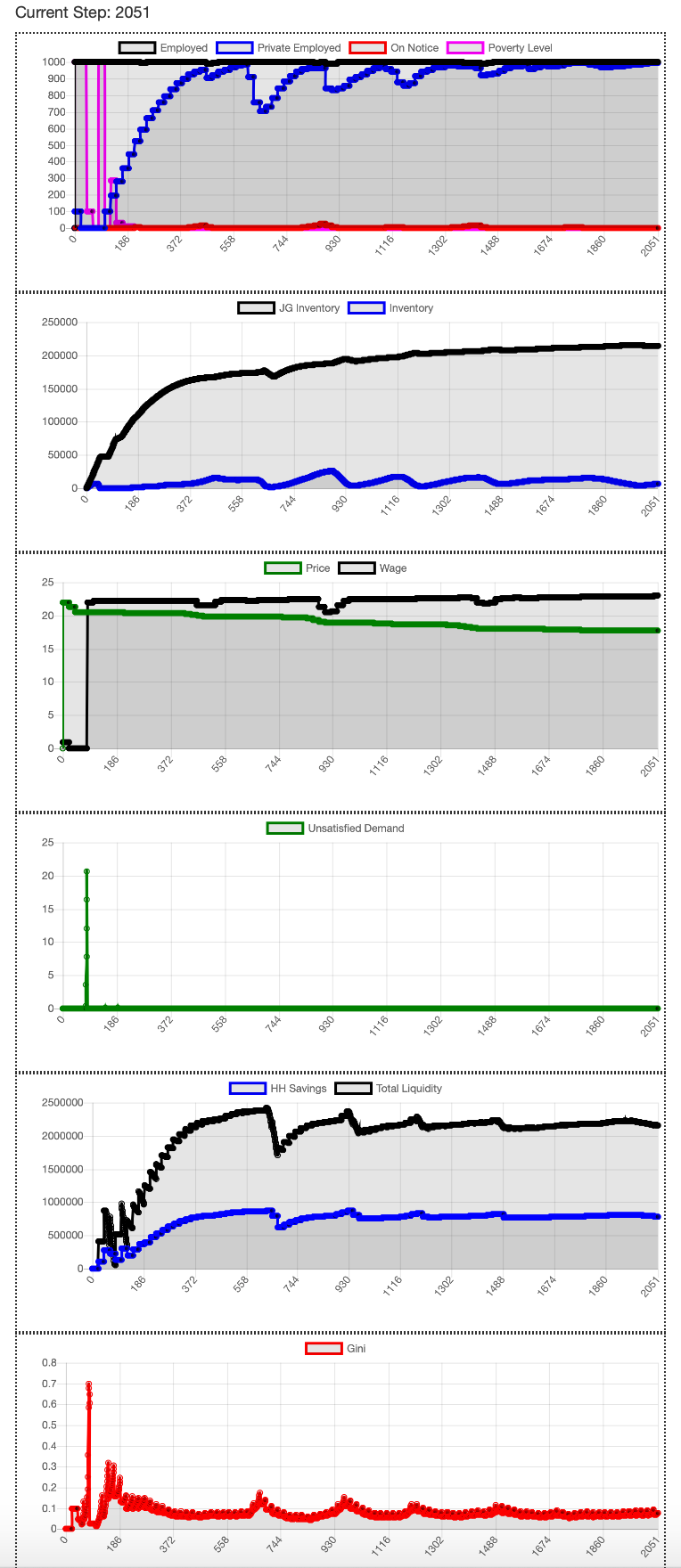In the [original model][2] and the [price shopping model][3] the money supply was exogenous, in that you had to allocate a fixed amount of money to entities and hope that was the right amount for the economy. Finding the right amount to avoid an inflation or deflation takes some effort.
Adding the Job Guarantee automatic stabiliser changes that to an endogenous approach. The Job Guarantee automatically adds the right amount of money into the circulation as required by the entities operating within it. In this post all the simulation runs start with both Households and Firms on zero liquidity, showing how the Job Guarantee can bootstrap a monetary economy. And incidentally how you would introduce a new currency.
I’ve been trying out some different scenarios by changing the other parameters of the [Job Guarantee Model][1] with some interesting results.
Here’s a trace where the JG goods price is dropped to zero - essentially removing all forms of taxation from the model.

No inflation. In fact we get wage growth against a stable goods price as productivity is redistributed to the wage share and away from profit. Which is what you would want to see in a system where productivity is fixed.
The business cycle appears to have disappeared.
What we have instead is a high level of savings with a slightly skewed distribution that leads to a small amount of unsatisfied demand and very low inventories. Essentially the people run out of things to buy in each cycle but the firms can’t price change to absorb that because they are in competition with each other for market share. This is where the drive for productivity improvements would normally come from - to fill the gap.
Contrast that trace with one where the Job Guarantee charges a ‘competitive price’ for its output.

Here there is much more dislocation in the economy. Firms try to cut wage costs. Savings and profits are squeezed. And we get a deflating goods price. It’s not a great business environment - as we can see with the large inventories.
But demand is still satisfied and the savings distribution is far more even if an awful lot lower.
The JG price here is acting like a tax during a slump, draining savings and demand during the wrong part of the cycle.
You get a similar effect if you charge a punitive price for JG output. This causes somewhat lower dislocation to the business sector at the cost of higher poverty during the bootstrap phase.

Chat about this and any other MMT topics on Discord with the growing New Wayland community . New members can click this invite link which will add the server to your Discord account